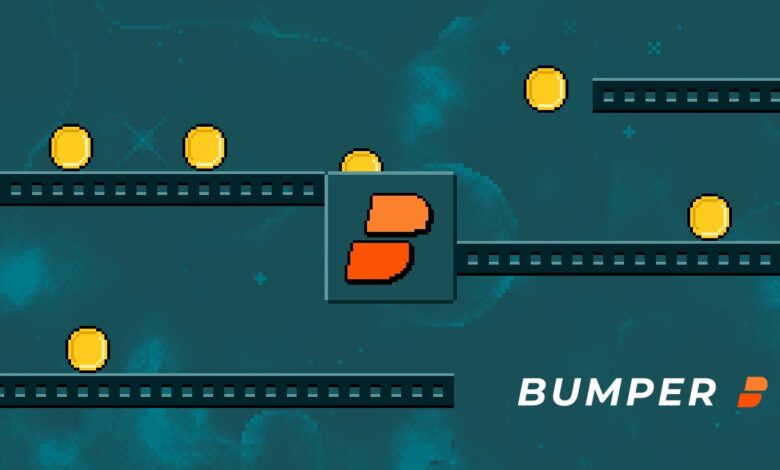Exploring the Technical Infrastructure for DeFi Price Protection – a Bumper Case Study

Bumper Finance has announced their “God-mode for Crypto,” a DeFi price protection protocol that protects the prices of assets from any sudden market drops. At this time of unprecedented uncertainty, the innovative protocol promises to shore up faith for holders of crypto assets. It does this by protecting the value of their assets and also allowing them to benefit from any renewed surge in value as the year rolls on, and crypto adoption drags itself kicking and screaming into the world.
Such a thrilling prospect has got observers keen to see how the tech behind the protocol stacks up. Yet how exactly does it work?
The Basics Behind Bumper and Bumpered Assets
Bumper Finance sets up two diametric asset pools between the “Takers” of their protection and the “Makers” of liquidity. On one side is ETH (the first asset offered on the protocol), and on the other is the reserve pool of USDC stablecoin built up through their Liquidity Provision Program.
Once a user opens a Taker position on the Bumper dApp, their asset is locked, and they are furnished with a bASSET in return – in the first instance, bETH. This is a fee-bearing token that correlates to their protected position. This bETH can be deployed in other DeFi protocols, for example, YEARN, meaning its own productivity as an asset is not squandered; bETH will essentially track the price of ETH but never fall below the protected floor.
Makers providing USDC liquidity are given a set of fungible ERC-20 tokens (bUSDC) representing their claim on the stablecoin reserve. These are yield-bearing tokens which harvest liquidity over time. This liquidity is paid in stablecoin or in the $BUMP token – its yield ascertained by the protocol in response to market conditions and approved by the governance administered by holders of $BUMP.
When a Taker wishes to end protection, they return their bASSET to the protocol, and it makes a swap (on redemption) and gives back the asset at the protected price point, minus any fees accumulated. Protection can be cancelled, closed, or claimed freely after an initial lock-up period, but this small period helps minimize the volatility in the protocol and acts as a hysteresis against an overabundance of transactional flux.
The use of Bumpered assets to represent yield farmers and protection takers claims on the pools results in a near-zero slippage engine, as the majority of gas fees and transaction costs are sidestepped as a result, and the value of protecting yourself through the protocol isn’t demolished by problematic accumulated costs of constant swaps.
Maintaining Aggregate Liability
Naturally, as Makers and Takers constantly realign their positions, the ratios of assets to stablecoin reserves will change. As such, Bumper dynamically reacts to the aggregate amount of liability represented in the asset pools and uses this to offer a series of hierarchical asset tranches (currently three: stablecoin reserve, T1 reserve and T2 reserve) for sophisticated Makers hunting exceptional yields.
If market conditions become extreme and the Reserve-to-Deficit ratio decreases, the volatile pools will yield more $BUMP to those involved. This allows sophisticated Makers who feel the volatility is temporary to earn a better return. By doing so, they then help naturally rebalance the protocol and restore affordable premiums to Takers. Simultaneously premiums, which naturally increase at such times – incentivize Takers to cash their protection and further contribute to re-achieving the correct ratio of assets to stablecoin reserves.
Failsafe Protections
To protect Takers’ asset value, Bumper does this by using first and second-order mechanisms to protect the liability in the pool – and a set of cascading redundancy modules should these measures not prove sufficient. Through decentralized governance, premiums, yields, and token distributions are altered to ensure there is balance, and the target ratio is maintained. The Bumper protocol is replete with natural incentives to keep the protocol stable and insulated against even extreme market conditions.
However, should these measures not prove to be enough – arbitrage bots will be allowed into the protocol to trade with the asset pool. If the arbitrage incentive is insufficient, then community permissioned trades authorized by holders of $BUMP will take place on DEXs to ensure asset-liability is covered. Although this is an extreme measure, this is expected to cover any serious liability incurred as a result of market conditions. Finally, Bumper Finance has a prudential capital reserve in its back pocket that is ready to be deployed as a final backstop to keep the protocol healthily balanced.
No More Bumps in the Road
This innovative tiered protection model and the use of Bumpered assets and stablecoins to represent claims on the asset pools, while still remaining entirely fungible, is the secret sauce that makes Bumper Finance’s protocol so attractive to VCs, liquidity providers, and general users alike.
The entire protocol is naturally incentivized to keep itself balanced no matter what the market does while also being backed up by protections that are decisive and community-governed to make sure all liabilities are covered. The technical infrastructure behind the project makes the protection it offers unparalleled in the DeFi space, while facilitating a wider confidence in the market as a whole.



